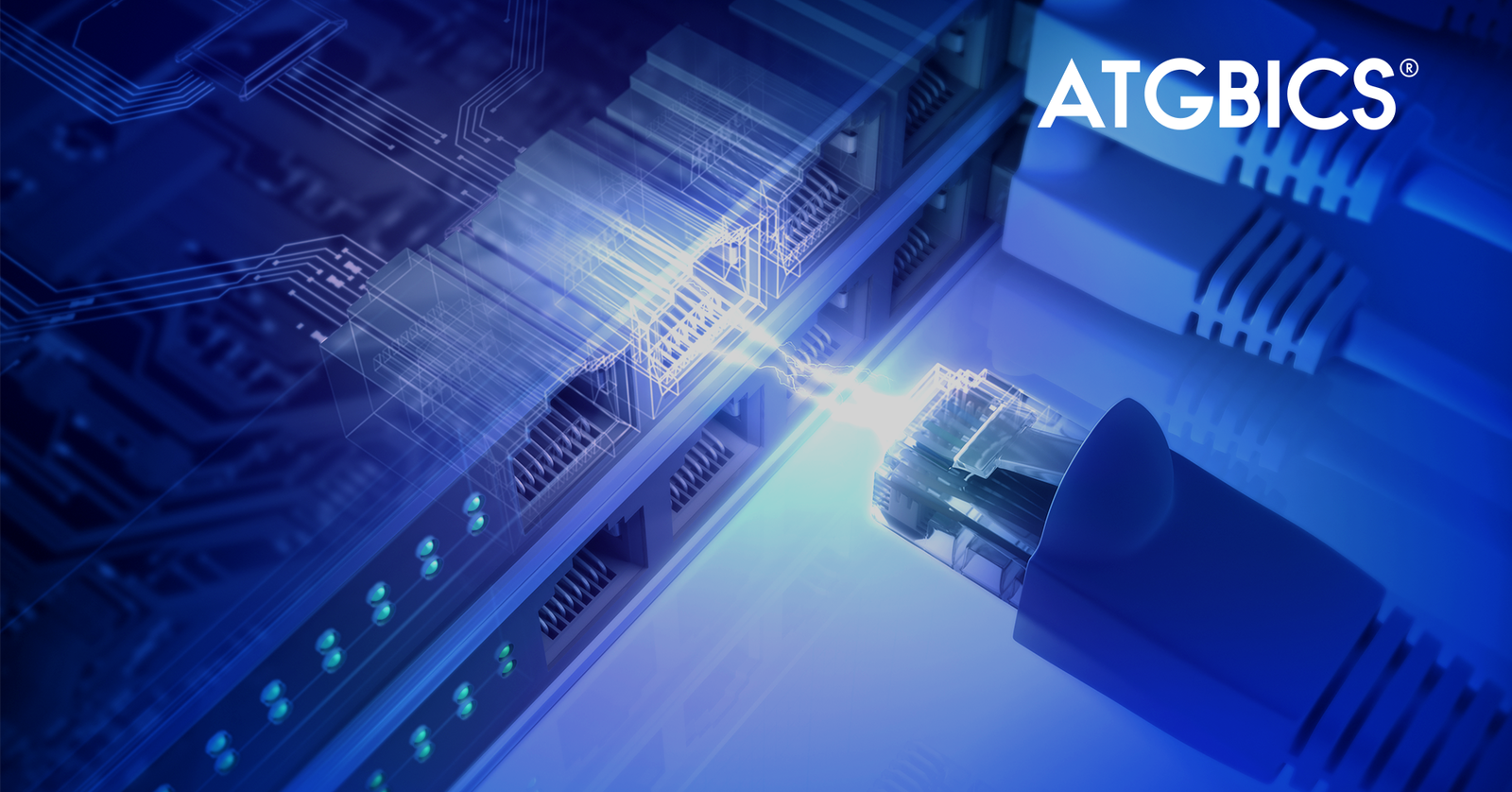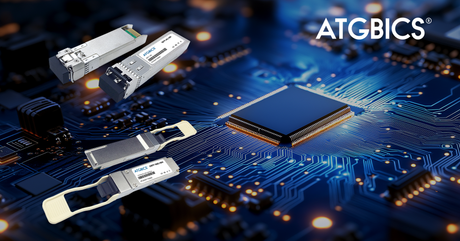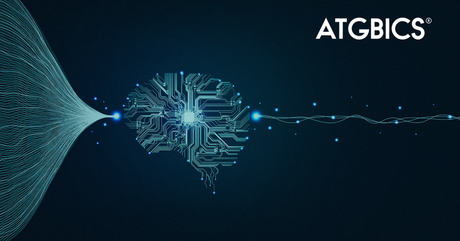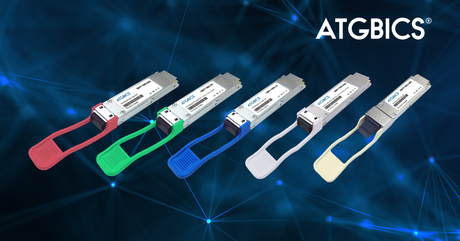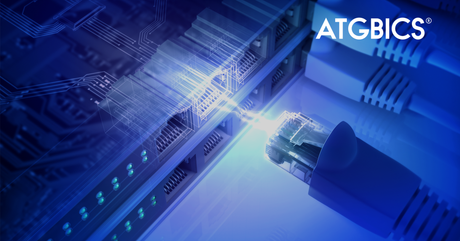Ethernet is a networking technology allowing devices to communicate over a wired connection. It is commonly used in Local Area Networks (LANs), Wide Area Networks (WANs), metropolitan networking and other general purpose computing. It is the foundation of most wired networking infrastructure across all applications.
Ethernet prevents packet collisions when devices are simultaneously transmitting data through the Carrier Sense Multiple Access/Collision Detection (CSMA/CD) protocol. Transmission devices check that the channel is clear before sending signals across, while constantly monitoring for packet collisions. This defines what happens when packets collide and when data is transmitted through the network, avoiding data corruption and allowing for more efficient data transfer.

Key Features
- High Speed – Ethernet is used for transmission speeds from 10Mbps up to 800Gbps with the latest technology, making it applicable to a wide range of applications and surpassing the majority of wireless networks. Ethernet also bypasses network congestion that may occur on Wi-Fi when many devices are connected as it provides dedicated bandwidth per device.
- Low Latency – Although not as low as InfiniBand technology, Ethernet’s latency allows for quick and efficient data transfer.
- High Security - Ethernet is generally more secure than Wi-Fi as the connection can only be accessed by the connected devices.
- Backwards Compatibility – New Ethernet hardware functions with older hardware but is limited to the slower components.
- Reliability – The direct cabling ensures a stable and consistent connection compared to Wi-Fi which can suffer from interference.
Disadvantages
- Physical Limitations – Ethernet requires direct physical cable connections, limiting mobility and flexibility
- Complex Setup – The cabling for Ethernet systems can be complicated, especially in big systems.
- Difficult to troubleshoot – It can be hard to identify the specific faulty hardware, however this is helped through built in monitoring and diagnostic technologies.
- Large networks can be costly – Large Ethernet systems need lots of hardware (e.g. cables, switches, routers etc.) and can be expensive to install.
What is an Ethernet Switch?
An Ethernet switch, also known as a network switch, is a piece of hardware that connects multiple devices within a local area network (LAN) using Ethernet cables. It intelligently forwards data packets to the relevant device using MAC addresses, ensuring efficient data distribution and minimising network congestion. These are essential in enterprise networks where wired LANs are used to seamlessly connect numerous devices such as printers, servers, routers or computers.
Types of Ethernet
Ethernet has evolved significantly since the first IEEE standard in 1983 with new developments aimed at meeting new speed, distance and application requirements. The main types of ethernet are as follows:
- Classic Ethernet (10Mbps)
- Fast Ethernet (100Mbps)
- Gigabit Ethernet (1Gbps)
- 10 Gigabit Ethernet
- 40 Gigabit Ethernet
- 100 Gigabit Ethernet
- 400 Gigabit Ethernet
- 800 Gigabit Ethernet

Timeline of the development of Ethernet technology
What is an Ethernet Cable?
The most common type of ethernet cables are made of copper and are classified into categories (Cat) with different speed and bandwidth capabilities. They typically use RJ-45 connectors. They also have varied types of shielding within the cable to protect from electromagnetic interference (EMI) or radio frequency interference (RFI) and prevent the internal wires from interacting with each other.
|
Cable Type |
Max Speed |
Max Bandwidth |
Max Distance |
|
Cat5 |
100 Mbps |
100 MHz |
100m |
|
Cat5e |
1 Gbps |
100 MHz |
100m |
|
Cat6 |
10 Gbps (short), 1 Gbps (long) |
250 MHz |
55m (10Gbps), 100m (1Gbps) |
|
Cat6a |
10 Gbps |
500 MHz |
100m |
|
Cat7 |
10 Gbps |
600 MHz |
100m |
|
Cat8.1 |
25 Gbps |
2000 MHz |
30m |
|
Cat8.2 |
40 Gbps |
2000 MHz |
30m |
While Cat cables are used for general networking within a home or office, networks requiring higher data rates such as within data centres typically use Direct Attach Cables (DACs) or Active Optical Cables (AOCs) capable of reaching speeds up to 800Gbps.
See our Knowledge Base article to find out more about DACs and AOCs.
Cable Shielding Types
Ethernet cables have different shielding types to protect against electromagnetic interference (EMI), radio frequency interference and crosstalk. It also helps prevent interference from adjacent cables and other nearby equipment. Shielding helps maintain signal integrity, especially in high-speed networks, industrial environments, and areas with high electrical noise.
The acronyms for shielding types are structured like this:

|
Shield Type |
Cable Shielding |
Twisted Pair Shielding |
|
UTP |
None |
None |
|
STP |
None |
Braided Shield |
|
FTP |
None |
Foil Shield |
|
SFTP |
None |
Braided & Foiled Shield |
|
U/FTP |
None |
Foil Shield |
|
F/FTP |
Foil Shield |
Foil Shield |
|
S/FTP |
Braided Shield |
Foil Shield |
|
SF/FTP |
Braided & Foil Shield |
Foil Shield |
|
SF/UTP |
Braided & Foil Shield |
None |
For Example:

Introduction of InfiniBand
The first InfiniBand standard was released in 2000 by the IBTA (InfiniBand Trade Association) and has since become a key technology for high performance, low latency computing. It utilises technologies like RDMA (Remote Direct Memory Access) to enable higher bandwidth and lower latency compared to Ethernet, making it especially useful in data intensive applications.
InfiniBand’s adoption in supercomputers and cloud infrastructure has driven developments in Ethernet such as RMDA over Converged Ethernet (RoCE) and better congestion control technology to support speeds up to 800Gbps. Ethernet remains dominant in general networking as InfiniBand is better suited to specialised high end environments.
Learn more in our InfiniBand Tech Talk blog

